![]()
![]()
![]()
Use LEFT and RIGHT arrow keys to navigate between flashcards;
Use UP and DOWN arrow keys to flip the card;
H to show hint;
A reads text to speech;
30 Cards in this Set
- Front
- Back
|
Weather |
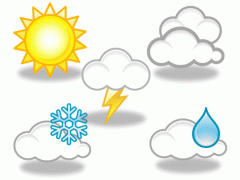
Combination of temperature, precipitation, cloud cover, and winds experienced daily |
|
|
Climate |
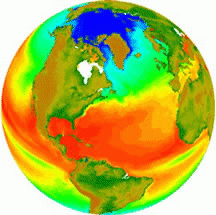
Weather Conditions of a place averaged over a long period of time |
|
|
Air Mass |
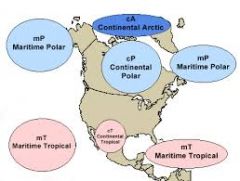
Large body of air having the same moisture and temperature conditions throughout |
|
|
Prevailing Winds |
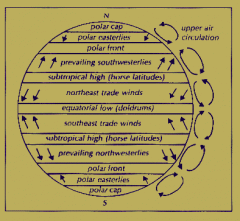
Winds that are most commonly found in an area. For example, over most of Canada, the prevailing winds are the westerlies, which blow from west to east
|
|
|
Polar Front |
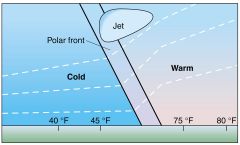
Stormy boundary between cold, dry polar air and warm, moist tropical air |
|
|
Jet Stream |

West to east movement of air in the mid-latitude flowing at speeds of up to 400 km/h at an altitude of between 8000 and 15 000 m
|
|
|
Condensation |
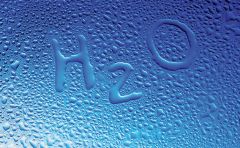
Process whereby water vapour is cooled and changes from an invisible gas to liquid water. Condensed water vapour is what forms clouds.
|
|
|
Relief Precipitation (also called orographic precipitation) |
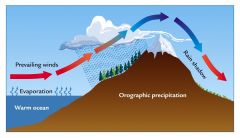
Precipitation created when an air mass rises to cross a mountain barrier.
|
|
|
Convectional Precipitation |
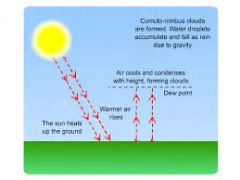
Precipitation caused on hot summer days, when heated land causes the air above it to rise by convection. As the air rises, it cools and condensation occurs. Rain or hail may fall from thunderclouds that build up.
|
|
|
Continental Climate |
Climate type that develops away from the influence of the ocean. The annual temperature range tends to be large and precipitation is low
|
|
|
Maritime Climate |
Climate that is strongly influenced by the closeness of an ocean or other large body of water. The annual temperature range tends to my small and the precipitation high. |
|
|
Moderating Effect |
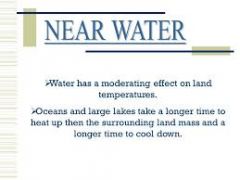
Effect that large bodies of water have on the climate over nearby land areas. Winter temperatures are warmer and summer temperatures are cooler than areas located away from large water bodies. The result is a small annual temperature range. |
|
|
Soil |
Surface layer of Earth, composed of mineral and organic materials, air and water |
|
|
Humus |
Dark, upper layer of soil made up of partially decayed plant material |
|
|
Soil Profile |
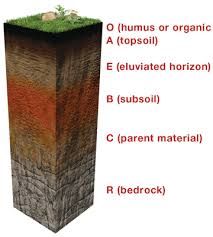
Different horizons (layers) in the soil and the rock layer (bedrock) below the soil. Each horizon has different physical, biological, and chemical characteristics. |
|
|
Leaching |
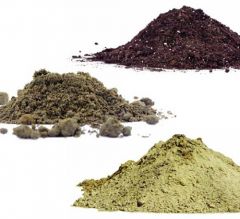
Removal of minerals from soil by water as it moves downward through the soil. Leaching occurs in wet climates |
|
|
Calcification |
Process by which, in dry climates, water carrying dissolved minerals moves upward through the soil. At the surface, the water evaporates, leaving the minerals behind. The surface soil is then considered calcified.
|
|
|
Capillary action |
Movement of water upward through small spaces, as in soil
|
|
|
Tundra |
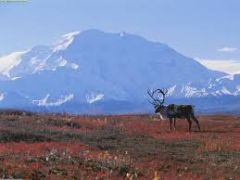
Northernmost vegetation region, found in areas to cold for trees to grow. Bushes, grasses, mosses and similar plants dominate
|
|
|
Transition Zones |
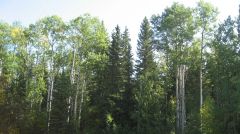
Areas where the characteristics of one region gradually change into those of another
|
|
|
Permafrost |
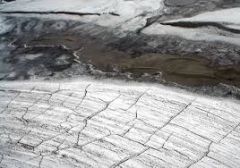
Permanently frozen ground that does not completely thaw in the summer
|
|
|
Boreal and Taiga Forest |

Coniferous (needle leaved) forest that stretches from east to west across Canada, south of the tundra but north of the grasslands and mixed forest
|
|
|
Coniferous Trees |
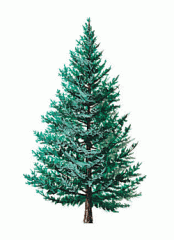
Trees with cones and often needle-like leaves; evergreen |
|
|
Deciduous Trees |
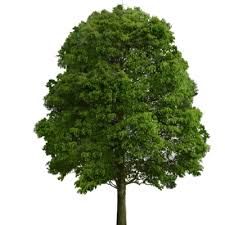
Broad-leaved trees that shed their leaves annually in the fall |
|
|
Mixed Forest |
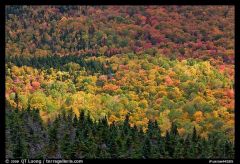
Vegetation region that contains both coniferous and deciduous trees. It is a transition zone between the deciduous forest and the boreal forest |
|
|
Short-grass Prarie |
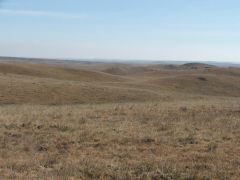
Type of vegetation in the Canadian prairie provinces where very little precipitation causes grasses to be shorter than in slightly wetter long-grass prairie areas
|
|
|
Long-grass Prarie |
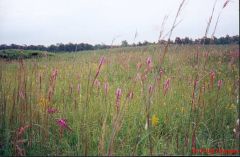
Type of vegetation in the Canadian prairie provinces where higher precipitation levels cause grasses to grow longer than in drier, short-grass prairie areas
|
|
|
Parkland |
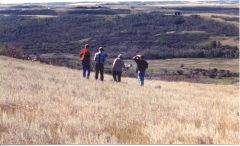
Vegetation region that is a transition zone between Grassland and Boreal Forest
|
|
|
Ecozone |
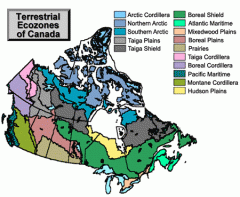
A distinct ecological region determined on the basis of physical, biological, and human factors |
|
|
Gross Domestic Product (GDP) per capita |

Total value of the goods and services produced within a country per person, excluding transactions with other countries |

